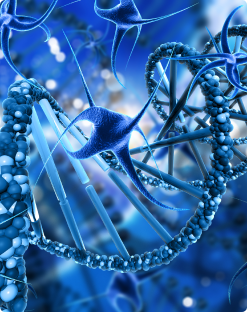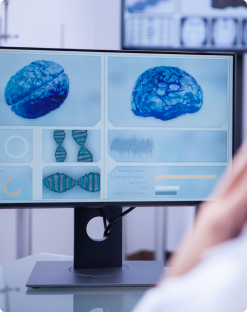
CADD group at IDD has both the technology and expertise in various classes of drug targets (e.g. Kinases, GPCRs, Ion channels, Nuclear receptors etc.) involving different modalities like orthosteric, allosteric & covalent small molecules binders as well as degraders and molecular glues. The group over the years had successfully worked towards information guided solutions in various projects in drug discovery and development. The various verticals fo CADD capabilities are summarised below:

Structure Based Design:
Aragen team’s experienced in understanding the structural biology of a given protein target and the science of its modulation. Understanding the structure of the protein and the follow-up analysis of the modulator binding site geometry including its flexibility is the prime importance in any structure-based drug discovery programs. At Aragen we have the capabilities to carry out Long Term Molecular dynamics Simulations to understand the dynamics of the protein active site geometry with respect to its modulator binding. This also includes the free energy calculations for determining the protein-ligand affinity. In the absence of any structure – either X-ray or CryoEM – the CADD group has the experience of building homology models of complex multimeric structure for proteins like Ion channels and similar druggable proteins of interest. Additionally we have a unique and proprietary virtual library of compounds with druggable characteristics (adhering to RO3 & RO5) for virtual screening on any given protein target of interest.

Ligand-Based Design:
Ligand-Based Design has also been an integral part in Aragen’s Drug Discovery projects. We have been successfully using the Ligand-Based Design approach to obtain leads in many complex targets such as RNA modulators etc. We have the capability to work on shape-based screening that relies on the Pharmacophoric features and the 3D geometry of the molecules. Tools and techniques are in place to carryout scaffold hopping and R-group modification studies as well. Towards this end, proprietary databases of unique fragments for the identification of drug-like molecules for lead optimization leading to clinical candidates have been generated. These fragments are of different properties catering to different therapeutic areas such as oncology, CNS and anti-infectives.

Targeted protein degradation design (TPD) ML based toolbox:
Designing targeted protein degraders using computational techniques has been a major strength at AIDD. We have developed a virtual database of linkers, E3 ligase binders and their combination. These linkers and E3 ligases are also enabled at Aragen. With the experience of designing TPDs in various drug discovery programs with partners and also the information available in the public domain, the CADD group has developed an in-depth understanding of modelling TPDs and developed a proprietary workflow for the same.

AI/ML toolbox for lead generation:
IDD Aragen has developed tollbox of fingerprints for property-directed lead generation leveraging the information available in public domain. These fingerprints are used for developing ML-based predictive tools for guiding the property generated molecules for therapeutic specific areas.
Success of CADD at Aragen
Structure Based Design
Long Term Molecular dynamics Simulation
Ligand-based design
